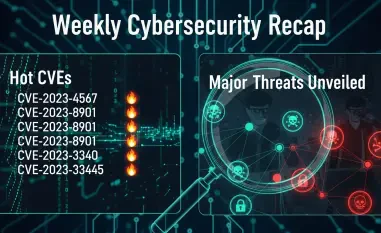Imagine a digital fortress, designed to protect sensitive corporate data, suddenly becoming the very gateway for cybercriminals to infiltrate networks across the globe, creating a dire situation for countless organizations. This alarming reality has struck those relying on SonicWall SSL VPN appliances, as a critical vulnerability and widespread misconfigurations have paved the way for devastating ransomware attacks. With industrial sectors bearing the brunt of these breaches, the stakes have never been higher. This review delves into the intricacies of SonicWall’s SSL VPN technology, dissecting its strengths, exposing its flaws, and evaluating its performance in an era of escalating cyber threats.
Understanding SonicWall SSL VPN Solutions
SonicWall stands as a prominent name in network security, offering a range of solutions tailored to safeguard business environments. At the heart of their offerings are SSL VPN appliances, engineered to provide secure remote access to corporate networks through encrypted and authenticated connections. These tools have become indispensable for organizations aiming to support a distributed workforce while maintaining robust security protocols.
The significance of SSL VPN technology lies in its ability to create a secure tunnel over the internet, ensuring that remote users can access internal resources without exposing sensitive data to external threats. SonicWall’s appliances are widely adopted across various industries, from manufacturing to healthcare, due to their scalability and ease of integration with existing systems. This widespread reliance, however, also amplifies the impact when vulnerabilities emerge.
Dissecting the Critical Vulnerability and Misconfigurations
Unpacking CVE-2024-40766
A major concern with SonicWall SSL VPN appliances is the critical flaw identified as CVE-2024-40766, carrying a CVSS score of 9.3. This vulnerability arises from a failure to reset local user passwords during migration processes in SonicWall firewalls, leaving outdated credentials vulnerable to exploitation. Such a gap allows attackers to launch brute-force attacks, gaining unauthorized access to systems with relative ease.
The implications of this flaw are profound, as it undermines the foundational security of the VPN appliance. Organizations unaware of this issue may operate under a false sense of security, believing their systems are protected while attackers exploit these overlooked credentials. SonicWall has acknowledged a surge in such attacks, underscoring the urgency for immediate remediation.
Risks Stemming from Common Misconfigurations
Beyond the specific vulnerability, misconfigurations in SonicWall SSL VPN setups exacerbate the risk. A notable issue is the LDAP SSL VPN Default User Groups setting, which, when improperly configured, grants authenticated LDAP users access to predefined local groups. This bypasses Active Directory group-based controls, potentially allowing attackers with compromised accounts to access sensitive areas like administrative interfaces.
Another critical weak point is the Virtual Office Portal, often left accessible to the public in default settings. Threat actors have been observed manipulating authentication mechanisms through this portal, especially when prior credential exposure has occurred. The combination of these misconfigurations with the CVE-2024-40766 flaw creates a dangerous attack surface that cybercriminals are quick to exploit.
The Threat Landscape: Akira Ransomware Exploitation
The Akira ransomware group has emerged as a formidable adversary capitalizing on SonicWall SSL VPN weaknesses. Since their rise, this group has claimed nearly a thousand victims, positioning themselves among the most active ransomware operators in recent times. Their focus on industrial sectors like manufacturing and transportation has caused significant disruptions, as reported by multiple cybersecurity firms.
Akira’s attack methodology is multi-faceted, beginning with initial access through SSL VPN components, followed by privilege escalation and data exfiltration. Their strategy often culminates in ransomware deployment at the hypervisor level, maximizing damage. A notable spike in SonicWall-related incidents has been observed in recent months, with affected organizations grappling with the fallout of these sophisticated breaches.
Beyond technical exploits, Akira employs advanced social engineering tactics, including SEO poisoning to distribute malicious installers and deceptive communication methods mimicking legitimate IT support. Such approaches, combined with tools for persistent access, highlight the group’s adaptability and the complexity of defending against their campaigns.
Performance Under Pressure: Real-World Impact
The real-world consequences of SonicWall SSL VPN flaws are starkly evident in the industrial sector, where Akira has targeted critical infrastructure with precision. Organizations in manufacturing have reported significant operational downtime, while transportation firms face challenges in securing supply chain data. These incidents reveal how a single point of failure in VPN technology can ripple across entire industries.
Analyzing SonicWall’s performance in this context shows a technology caught between robust design and critical oversights. While the encryption and authentication features remain strong in theory, their effectiveness is severely undermined by both the identified vulnerability and user-driven misconfigurations. This duality paints a picture of a solution that, while capable, requires stringent oversight to maintain security.
Reports from affected entities indicate that the speed of exploitation by threat actors often outpaces the ability to patch or reconfigure systems. This lag in response time further diminishes the perceived reliability of SonicWall SSL VPN appliances under current threat conditions, raising questions about their resilience against evolving ransomware tactics.
Challenges in Securing SonicWall SSL VPN
Addressing the CVE-2024-40766 flaw presents technical hurdles, particularly in identifying and resetting outdated credentials across sprawling network environments. The complexity of this task is compounded by the scale of deployment in large organizations, where legacy systems and migration processes may obscure visibility into vulnerable accounts.
Human factors also play a significant role in perpetuating risks. A lack of awareness or inadequate training often leads to persistent misconfigurations, such as leaving portals publicly accessible or failing to update security settings. These oversights, though avoidable, remain a pervasive barrier to securing SonicWall appliances effectively.
In the broader cybersecurity landscape, the adaptability of ransomware groups like Akira adds another layer of difficulty. Their continuous evolution of tactics to exploit known issues and bypass defenses means that static solutions are insufficient. This dynamic environment demands a proactive approach, challenging organizations to stay ahead of threats targeting SonicWall technology.
Industry Response and Mitigation Efforts
SonicWall has responded to the crisis with patches aimed at resolving CVE-2024-40766, alongside detailed guidance on secure configurations. Recommendations include regular password rotation, enabling multi-factor authentication, and restricting Virtual Office Portal access to internal networks. These steps aim to close existing gaps and fortify systems against ongoing attacks.
Cybersecurity experts and firms have echoed the need for layered defenses, advocating for botnet filtering and account lockout policies to deter brute-force attempts. The emphasis on mandatory security measures reflects an industry-wide recognition that relying solely on vendor patches is inadequate in the face of sophisticated threats.
Looking ahead, the trajectory for SSL VPN technology suggests a shift toward integrated security frameworks. The persistent targeting of such appliances signals a need for manufacturers like SonicWall to embed advanced threat detection and automated configuration checks into future iterations, ensuring that vulnerabilities are addressed at the design level.
Final Thoughts on SonicWall SSL VPN
Reflecting on the evaluation, SonicWall SSL VPN technology revealed both commendable strengths and alarming weaknesses during this period of intense scrutiny. The robust encryption and scalability stood out as key assets, yet the critical CVE-2024-40766 flaw and prevalent misconfigurations exposed significant risks that attackers exploited with devastating effect. The performance against ransomware threats, particularly from groups like Akira, underscored a pressing need for improvement.
Moving forward, organizations that rely on these appliances must prioritize immediate action, implementing SonicWall’s patches and adopting stringent security practices like multi-factor authentication. Beyond individual efforts, collaboration with cybersecurity communities to share threat intelligence becomes essential to anticipate and counter evolving attack methods. Ultimately, the path to securing remote access technology demands a commitment to continuous vigilance and innovation, ensuring that tools designed as shields do not become gateways for intrusion.













